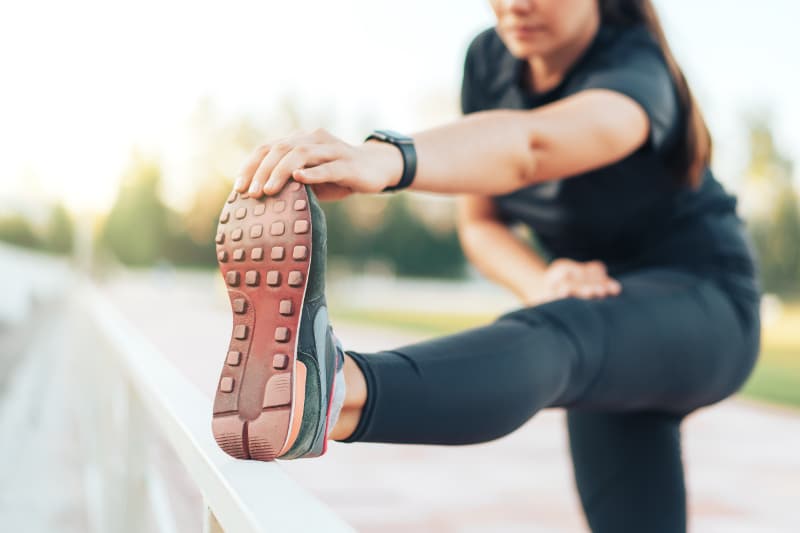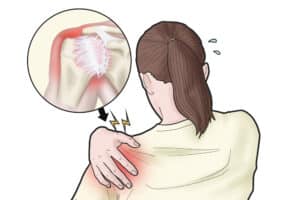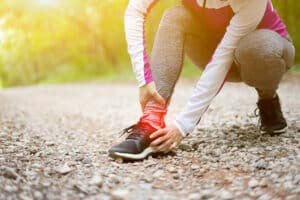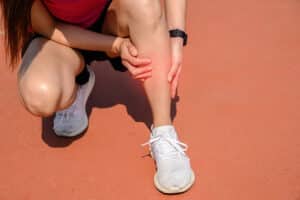It’s that time of year when the weather starts to clear up and playing or competing in sports is in full swing again. That means sports injuries will be in full swing too. With many games kept on hold these past few years, it’s made many athletes stay inside and immobile.
Whether or not you’ve been staying active during your time away from public sports, it is important to keep injury prevention in mind at all times. Using kinesiology exercises/stretching and simple tips, keeping the basics on preventing sports injuries in mind should be a part of your regular routine.
Common Sports Injuries and Their Causes
Types from injuries can range in their severity, however these are the most frequently seen in sports:
- Sprains and strains
- Joint injuries (knee, shoulder, ankle)
- Muscle cramps
- Dislocations
- Fractures
- Achilles tendon injuries
- Pain along the shin bone
The causes of sports injuries can include:
- Improper/poor training practices
- Wearing improper sporting gear
- Poor health
- Incorrect warm-up or stretching practices before a sport
Basic Sports Injury Prevention Tips
Here are some basic tips to prevent a sports injury:
- Create a fitness plan including cardiovascular exercise, strength training, and flexibility to help decrease chances of injury.
- When strength training, alternate between the different muscle groups.
- After your sport is finished, cool down properly.
- To prevent dehydration, heat exhaustion, and heat stroke, stay hydrated and drink lots of water.
- Use proper equipment or gear for your sport and wear footwear that provides the right support. This may correct any foot issues you may have that could lead to injury.
- Learn the proper way to play your sport. Any techniques and skills you can learn to better the way you play can also help prevent injury.
- When tired, rest. Avoid exercise and sports if you’re tired and sore.
- With each repetition go through the full range of motion during strength training, and always take your time.
- If you do happen to suffer a sports injury, make sure you seek advice before resuming any kind of strenuous activity.
Stretching exercises improve the ability of muscles to function, which reduces the risk of injury. It shouldn’t be painful; your stretch should start slowly until reaching the point of muscle tension. The stretch should be held for about 20 seconds.
Basic Kinesiology Stretching Exercises
Before even starting your stretching exercises and sports, here are some tips for success:
- Don’t Bounce. You can cause damage if you bounce around while stretching.
- Take it Slow. It’s not a race to finish stretching first. Maximize your benefits by going slow and steady.
- Make Fitness Year-Round. Even if it’s the off season, it’s still good for your body to stay in shape for when the season starts up again.
- Use Proper Gear. To reduce injury, make sure you have the proper gear, it fits properly, and it’s well-maintained and designed specifically for the sport you are playing.
- Respect Your Injury. If you have a sprain or other injury, check with your trainer, or come and see us for an assessment before you spring back to action.
Proper Stretching
No matter what the sport is, skiing, running, or a group sport like basketball, football, or soccer, stretching helps keep our body flexible. Stretching after the sport or activity should be part of your injury prevention plan as well as a warm-up before.
Speaking of warm-up, before any sport or physical activity, including stretching, your body needs to be warmed up with light exercise. Just a few minutes of running in place, walking, or jumping jacks will warm your muscles.
Once you’ve gotten your muscles warmed up, they are ready for these simple stretches:
- Forward lunge. Go down on one knee. Place your other leg forward at a right angle (knee right over ankle). Lean forward. You’ll feel the stretch in the front of your hip. Hold 20 to 30 seconds. Then switch legs.
- Standing quad (thigh) stretch. Using a wall or chair for support, raise one foot behind you. Use your hand on the same side of your body to hold your foot at the ankle and pull it toward your butt, stretching the thigh. Keep your knees close and hips forward. Hold 20 to 30 seconds, release. Then switch legs.
- Seat straddle lotus. Sit down with the soles of your feet together in front of you. You’ll feel a stretch at your inner thigh. Hold 20 to 30 seconds.
- Side seat straddle. Sit on the floor with your legs spread apart. With both hands, hold the shin of one leg. Lean forward. Hold 20 to 30 seconds. Then switch legs.
- Seat stretch. Sit with legs straight out in front. Holding shins or ankles, lean forward from your hips. Bring your chin toward the knees. Hold 20 to 30 seconds.
- Knees to chest. Lying on the floor, bend your knees and bring them to the chest. Hold 20 to 30 seconds.
The key to a good stretch is taking it slow and easy, and don’t forget to focus on your breathing while doing these exercises as well.
Come and See Us
If you need some extra guidance in preventing sports injuries, you would like to create your own prevention program, or you need active rehabilitation via a kinesiology session, you can come and see us at Nova Active Rehab.
Book a session by:
- Booking online here: https://novaactiverehab.janeapp.com
- Calling us at 604-783-8300
- Emailing us at info@novaactiverehab.com
Did you know? Not only do we offer online kinesiology sessions with our kinesiologists, but also we can create a personalized workout for your sports routine with our personal training program.
You can count on us for your sports injury prevention needs. Don’t hesitate to contact us with any questions or concerns you may have.








